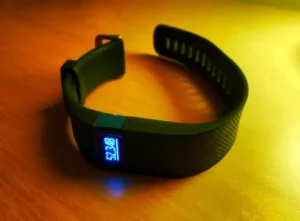Fitbits are truly great smartwatches that come with a mixture of abilities. Yet, there are two sides to a coin. Some users of Fitbits have mentioned that they’ve faced some issues with their Fitbit such as variance in tracking their sleep or not tracking their sleep entirely. I’ve mentioned some methods to fix the issues if your Fitbit isn’t working properly.
If your Fitbit automatically stops tracking sleep, try restarting it and then use the particular directions provided for that specific model of Fitbit. If your Fitbit is still not working as it should, then you can adjust and customize your device’s sleep sensation level.
If not then you can manually start and stop the sleep tracker through the Fitbit app. Here, we’ll discuss some ways to help you fix your Fitbit if it automatically stops tracking your sleep.
Why Is Your Fitbit Not Recording Sleep?
If you want to properly fix this issue of Fitbit not tracking your sleep, then you should begin with learning how Fitbits record sleep.
Firstly, after an hour of zero motion, your Fitbit records that you’re sleeping. Hence, if you’re taking a nap or just lying there for less than 60 minutes, then your Fitbit will not track it like asleep.
So, before you are going to bed you’ve to ensure that your Fitbit is close-fitting on your wrist. This way it will track the sleep most accurately. However, if you’re still facing the same issue with your Fitbit, then try the below-mentioned tips to fix it:

Restart Your Fitbit
The foremost thing to do is, always Restart your Fitbit. This is because it’s easy and it simply fixes several Fitbit issues along with the issue of your Fitbit not tracking sleep.
Here are the steps to restart an Ace 2, One, Inspire, or Fitbit Charge 4:
- Plug in the charging cable of your device to either the power socket or your computer.
- Insert the other end of the wire straight into your Fitbit. Make sure that you’ve connected it securely. You can do this by checking if it is charging or not.
- Press down the switch which is present on the side of your Fitbit for nearly 10 to 12 seconds.
- It purely depends on the model of your Fitbit, you might notice a battery symbol, a smile symbol, or a start-up display. Once you notice any of these symbols, you should release the switch and simply plug off your Fitbit.
The Fitbit Zip runs on a CR2025 battery. So if you have a Fitbit Zip with the same issues, here are the steps to restart it:
- Open the area where the battery is placed and remove them.
- Wait for nearly 10 seconds.
- Place the battery back in your Fitbit. Make sure the + sign is facing up.
- Lastly, shut the battery bar.
However, if you’ve other Fitbit models with the same issues, here are the steps to restart them:
- For Flex 2, Fitbit Ace, or Alta, press the key present on the charging wire thrice to restart. Make sure you give a short interval between presses.
- For Versa, Fitbit Blaze, and Ionic, push and hold the keys present on the bottom and back of your Fitbit till you notice the Fitbit logo to restart.
- For Fitbit Versa 2 and Versa Lite, press the back key for approximately 10 seconds to restart. (These models of Fitbits don’t require plugging to restart)
Adjust Your Fitbit’s Sleep Sensor Mode
As Fitbits differ, there are some Fitbits with Sensitive and Normal modes for recording sleep. If you’re someone who moves a lot in their sleep, then the sensitive mode might find it seem like you aren’t napping at all. However, if you’re a light sleeper, the normal mode is the one for you.
If you want to change your Fitbit into sleep sensitivity form through your smartphone, here are the steps for that:
- In your Fitbit app, tap on your profile symbol.
- Pick “Advanced Settings”.
- Choose “Sleep Sensitivity”.
- Select either Sensitive or Normal mode.
However, you cannot edit this setup if you’re using an Android device.
Now, if you want to modify your Fitbits sleep sensitivity form on your computer, then I’ve provided the steps for that too:
- Navigate to fitbit.com, then sign in to your account.
- Now, tap on the gear symbol which is present on the top-right corner of your dashboard.
- Click on “Settings” through the drop-down menu.
- Look for “Sleep Sensitivity” and pick either Sensitive or Normal.
- Click on “Submit” to save your preference.

How To Adjust The Fitbit’s Sleep Record Manually?
If you’re still encountering the same not tracking issue, then you can use your Fitbit app to track your sleep. You can do this through the start and stop sleep tracking available on your app. Also, you can make any modifications if your sleep record was incorrect. Here are the steps to do the same:
- Open your Fitbit app, and choose the Sleep tile.
- Click on the three spots.
- Choose the option to update.
- Now, adjust the time you woke up and/or went to sleep.
- Tap on “Save”.
If you don’t want to worry about whether your Fitbit is automatically recording your sleep or not, then you can manually record your sleep in your Fitbit account or in the Fitbit app itself. However, I don’t prefer this option as you won’t perceive any information regarding your sleep stages or sleep patterns when you’re manually logging your sleep record.
Other Setting Of Fitbit Sleep Trackers
Fitbit is a helpful device, that can add up to you maintaining and even creating a sound sleep schedule with its multiple sleep settings. Do you know that your Fitbit also has a silent alarm that can nudge you up lightly?

Sleep Goals
You can also make an aim of how many hours you desire to sleep every night. The preferred sleep hours for adults should be at least 7 hours. I’ve mentioned the steps below to make your customized sleep goal:
- Open your Fitbit app, then pick the Sleep tile.
- Tap on the gear symbol present over the top-right corner.
- Create or modify your sleep goal.
- Tap “Done”.
Sleep Schedule
You can also insert a sleep schedule, which will help you in improving and meeting your sleep goal. All you’ve to do is set your target wake-up time, bedtime, or both in your Fitbit app to make your sleep schedule.
Once you’ve decided on a bedtime that is perfect for you, you can also insert a bedtime reminder for some specific times and days. You will notice a star present in your sleep record when you will stick to your sleep schedule and finish your task.
Wrapping it Up
Fitbits are an excellent device that helps you with improving your sleeping habits with various sleep schedules. However, if you’re still facing the same issue regardless of the model (Fitbit Versa 2, Fitbit Inspire2) then the above-mentioned troubleshooting methods should help you. I hope this read helped you with the issues.
READ:

